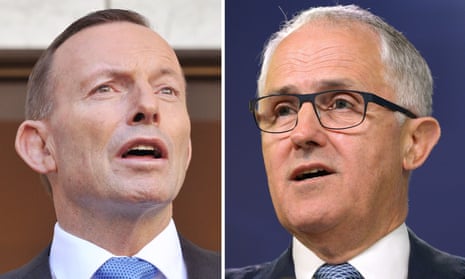New research by the Australia Institute reveals that across a broad range of economic measures, the Abbott/Turnbull government has performed the worst of any Australian government since Menzies took power in 1949. The institute’s paper also notes that historically there is little correlation between “business friendly” policies and economic performance.
Inevitably election campaigns become focused on economic management. On this score historically, the Liberal Party is usually assumed to be the better economic manager. For example, a poll earlier this month by the Essential Report had voters preferring the LNP over the ALP on the issue of who they trusted on “management of the economy” by 39% to 27%.
Such a belief is behind the Liberal party’s main desire to fight the election campaign on their economic plan, the central feature of which is the company tax cut.
With this has come much commentary that the ALP is waging a war on business, and that being anti-business (or at least anti the company tax cut) means being against strong economic performance.
But a report by the Australia Institute to be released today titled “Jobs and Growth ... And a Few Hard Numbers” shows that there is little correlation between economic performance and either political party. The report, which examines the economic performance of Australia under every prime minister since Menzies, also found that the “business friendliness” of a government does not appear to have much impact either.
The report examines economic performance across a range of 12 indicators – including GDP per capita, the unemployment rate, employment growth and the growth of real business investment and intellectual property investment.
The findings by economist Jim Stanford showed that on all but two measures, the performance under the Abbott/Turnbull government has been worse than that under the Gillard government.
Only on the measure of growth of government debt as a share of GDP is the Abbott/Turnbull government “better”. But even if you agree with the proposition that lower government debt is a good thing, the Abbott/Turnbull growth of 2.16% of GDP is only marginally better than the 2.26% of GDP growth observed under the Gillard government.
The lack of connection between economic growth and business friendliness is highlighted by the fact that GDP per capita growth was strongest under the Holt government and yet that government had the third worst level of business investment growth, but the largest growth of public sector investment:
While there is more of a link between the investment in intellectual property and GDP growth, it is not a measure that would provide Malcolm Turnbull with any joy. For all his desire to be agile and innovative, the Australia Institute found that the growth of intellectual property investment during the Abbott/Turnbull government was the second worst in the post-war era.
Employment is one area that certainly sees governments somewhat hostage to their times. The post war period under Menzies, Holt and Gorton/McMahon saw negligible unemployment. But as I have previously noted, it is rather easier to have less than 2% unemployment when two-thirds of women are not in the labour force.
The findings also reflect the changing nature of employment, with the increase in part-time work leading to recent governments having lower levels of the adult population employed full-time.
This has also been exacerbated since the GFC. Since September 2008, part-time employment has grown by 26.8%, while full-time employment has grown by just 6.9%:
While it might be unfair to only examine full-time employment, as Stanford notes, when looking at economic health, full-time employment will always be the better indicator given “part-time jobs generate less output and less income than full-time positions.”
An examination of income and wages growth also shows the current situation being much worse than in the past:
The pre-1970s saw strong wages growth and also strong income growth partly due, as Stanford notes, to “the expansion of social welfare programs.”
But real wages growth since the Fraser government has been much weaker than it was previously and the current Abbott/Turnbull government has seen the worst performance ever. The government can also claim the post-WWII record of lowest growth in personal income.
The records don’t stop there however. The current government has also seen the largest expansion of private household debt, beating that observed under the Howard government.
Record low wages and income growth coupled with record increase in household debt. Not really something you’d want to boast about.
The government can’t really boast about the level of government debt either. While it has grown by less than under either the Rudd or Gillard governments there is little sense of a slowdown.
Although it is tough to judge this against economic performance. Had Abbott and Turnbull sought to slow the growth of government debt faster than they have, it would likely have led to slower economic growth.
But there really is no sense however that Turnbull and Scott Morrison can claim they have brought debt under control:
As Stanford concludes, “it is clear from the comparison of the successive governments that broader, often global forces have more effect on Australian economic performance than discretionary policy”.
Generally speaking if you wish to be a government that presides over strong economic growth, is pays to govern at a time when the world economy is growing strongly.
Stanford notes that the long post-second world war boom was fuelled here and in the rest of the world by “strong investment, a growing public sector, and rising real incomes.” Similarly the 1970s here and abroad were a time of “global stagflation” and the rebound occurred “during the global commodities boom. Australia has also been unable to avoid the slow growth period after the GFC that has hit the world.
Stanford suggests that ascribing these observed swings to the relative “economic competence” of successive governments is far-fetched.
One problem with the current view of economic competence is that the most obvious comparison is the strong growth under the Howard government during the mining boom.
GDP grew stronger during Howard’s government than it had since 1960, while under Rudd it was the weakest it had been under any such government.
Under Howard, GDP grew by 3.7% on average each year, well above the 2.2% of the Rudd government, so it’s not surprising most people think Howard (and thus the Liberal party) was a better economic manager.
But the times were much different.
Howard’s average growth was just 0.85% better than the average 2.85% growth observed throughout the OECD. By contrast Rudd’s GDP growth was 2.9% better than the OECD which saw GDP fall by 0.7% during Rudd’s period in office:
In effect Howard was a very good downhill skier – good at looking good while things were easy; but the Rudd (and Gillard and Keating) governments were much better at outperforming the rest of the world.
And surely that is the best guide of economic management.

